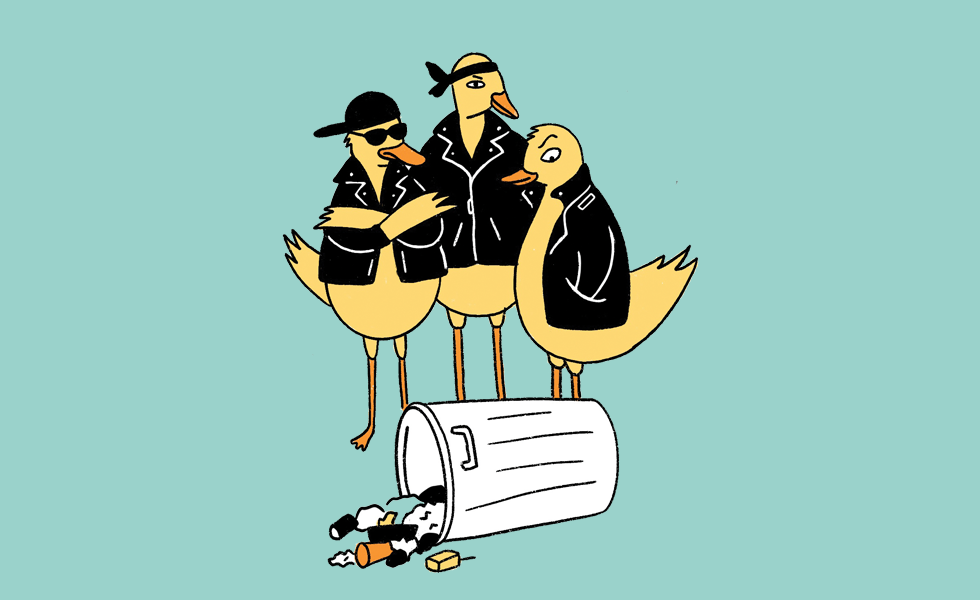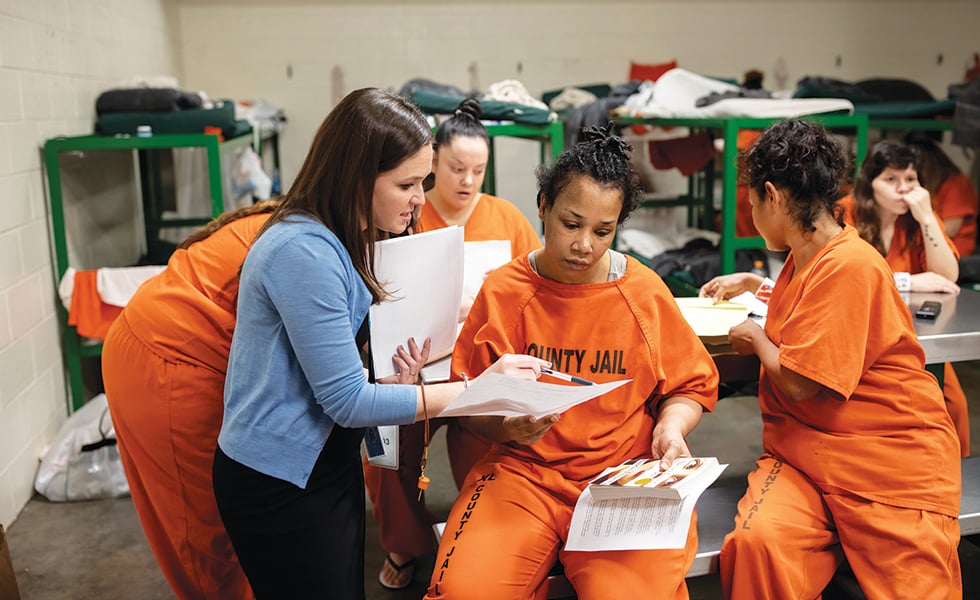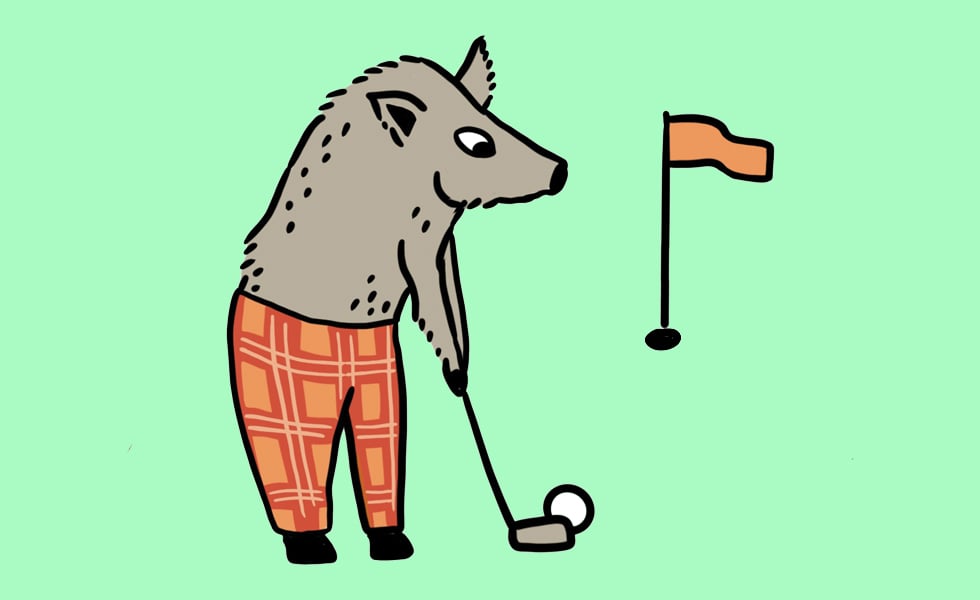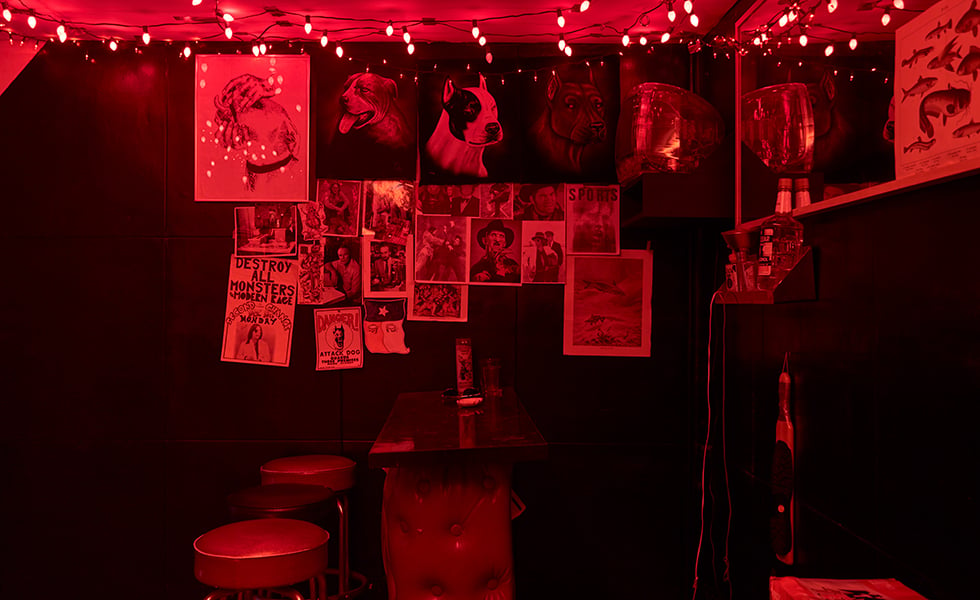
The 22-Hour Drive Between Houston and Los Angeles Inspired This Hypnotic Art Show
Eerie and evocative, Will Boone’s Highway Hex considers the sprawling concrete jungles of Houston and Los Angeles.
Above: Future Beer and Pawn, 2019
Texas and California are the two most populous states in America. Accordingly, they boast three of the nation’s 10 most highly populated metro areas. But between these masses of humanity, where steadily increasing populations strain against the indefinite boundaries of urban sprawl, lies 1,500 miles of desert highway. Pulling up stakes and migrating from one of these states to the other, as an estimated 63,000 Californian and 41,000 Texan transplants elected to do in 2017, is a multi-day road odyssey.
Embarking on such extensive journeys by car can spur a strange affliction. Highway hypnosis, a phenomenon that emerged alongside the nascent U.S. highway system in the 1950s, is an altered mental state in which people drive considerable distances with little to no conscious recollection of doing so. Also called white line fever, the condition not only causes one to slip into a trance-like state, but often also conjures vivid and disconcerting hallucinations.
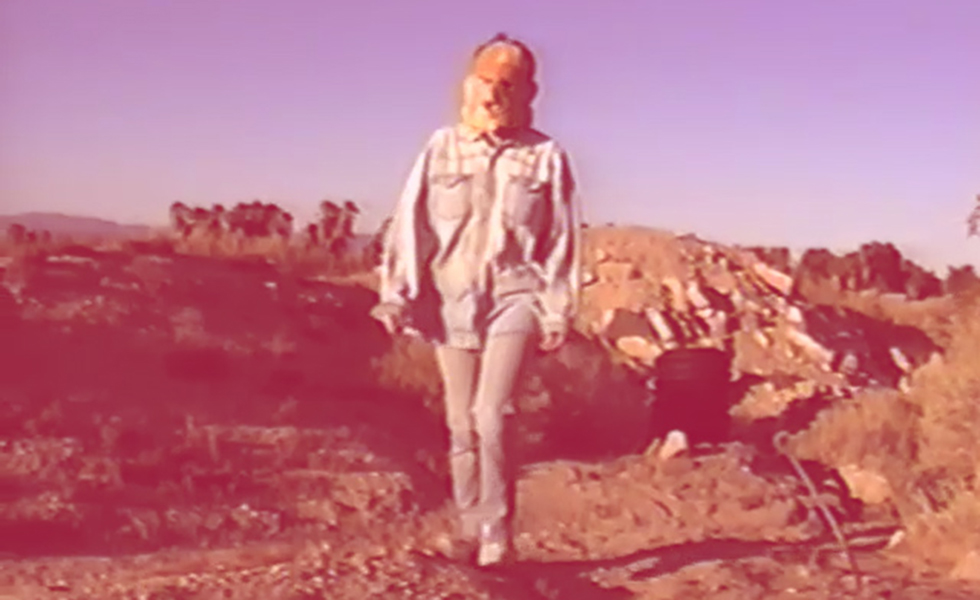
These surreal visions are the genesis of a new exhibition at the Contemporary Arts Museum Houston. On view until February 16, Highway Hex is the first solo museum exhibition by mixed media artist Will Boone, and it’s inspired in part by the 22-hour drive between Houston, where he grew up, and Los Angeles, where he now lives. The show is characterized by a sense of spatial and temporal impermanence imbued with a hint of delirium.
The basement space that houses Highway Hex is saturated in an eerie red neon glow. The distinctive lilt of George Jones floats up from a homemade jukebox that, curiously, features nothing but the late country icon’s greatest hits. Enormous, vibrant red-and-black abstract paintings that Boone calls “arterials”—referring to both the high-capacity urban thoroughfares and the sanguine hue of the human heart—line the concrete walls. By contrast, the experimental short film that acts as the exhibition’s centerpiece is distinctly lo-fi, featuring a washed-out color palette and hazy scenery. The 54-minute film, Sweet Perfume, imagines the iconic villain of 1974 slasher classic The Texas Chainsaw Massacre as he journeys from Texas to California in the wake of his sadistic crimes.
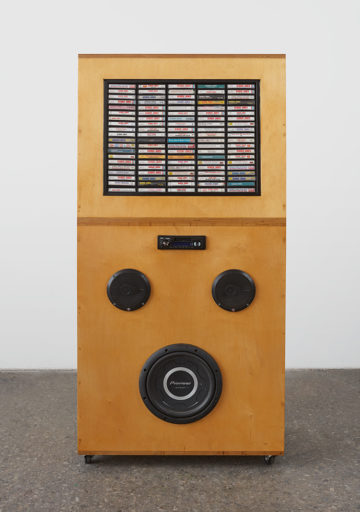
Boone’s exhibition also features a lifesize mock-up of a fictitious pawn shop-slash-bar, entitled “Future Beer and Pawn.” Adorned with quirky portraits of pit bulls and an eclectic array of state trooper badges lit up in a glass display case, the piece is reminiscent of a meticulously crafted film set. The dark wooden backdrop and vinyl counter, along with the neon lights and the tinny strains of country music wafting from the jukebox, evoke the liminal rundown businesses and bygone tourist attractions that dot long, desolate stretches of American highways.
The exhibit refocuses on the urban with a striking metal sculpture titled “The River.” Composed of long, horizontal industrial latticework, it’s a Blade Runner-esque reimagining of the cavernous concrete channel that encases the Los Angeles River. Like the rest of the exhibition, the grid is alight from within, radiating Highway Hex’s characteristic red neon glow. When he began to sketch the channel, Boone says, he was fascinated by the negative space within the concrete design—the distance between the footbridge running above the canal and the murky surface of the water below.
“I began to wonder what was down there,” Boone reflected. The structure called to mind pyramids he’d once visited in Mexico: solid, imposing feats of architecture featuring internal chambers rumored to emanate an ethereal power. Both Los Angeles and Houston, Boone says, are sprawling concrete jungles, radiating a “weird energy that makes the city feel like a veneer.” In his work, both cities are a facade for an otherworldly energy thrumming just below the surface.
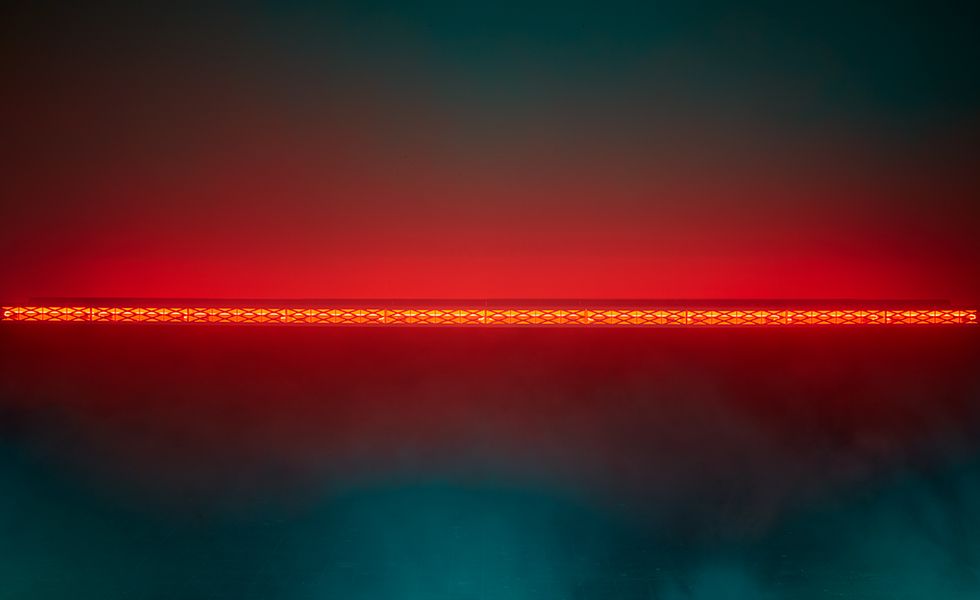
Boone’s perception of this charged coexistence between austere, industrial cities and the surreal life force of the untamed landscapes between them is felt throughout Highway Hex. His art explores the effects of overwhelming distance on a traveler’s perception of what lies at the road’s inevitable end.
Through the pervasive use of that sinister shade of red and a cinematic centerpiece starring a nomadic killer, Texas, for Boone, becomes “a shorthand for violence.” In his work, Boone admits, “I don’t know if I’m talking about actual Texas, or the perception of Texas.” Southern California, on the other hand, embodies a sort of esoteric magnetism of a refuge for outcasts. In both cases, the absolute monotony of a nearly 2,000-mile stretch of road serves as the perfect tool to empty one’s mind of any stray factual tidbits or preconceived notions about a destination. Under Boone’s hypnosis, cities are mere holograms, rundown roadside establishments become liminal spaces, and the land radiates with a supernatural fever. The bewitching lens of Highway Hex allows viewers a glimpse of an America that’s in turn contemplative, menacing, and eerily familiar.
Read more from the Observer:
-
Driving My Life Away: As physicians leave small towns, rural Texans must travel farther and farther for health care.
-
A Chain Reaction: Luby’s is in trouble. Can the iconic cafeteria chain endure?
-
I’ve Lived in East Austin for 60 Years, and I Don’t Recognize it Anymore: As gentrification reshapes my neighborhood, I fear we’re losing something of real value to our city.
